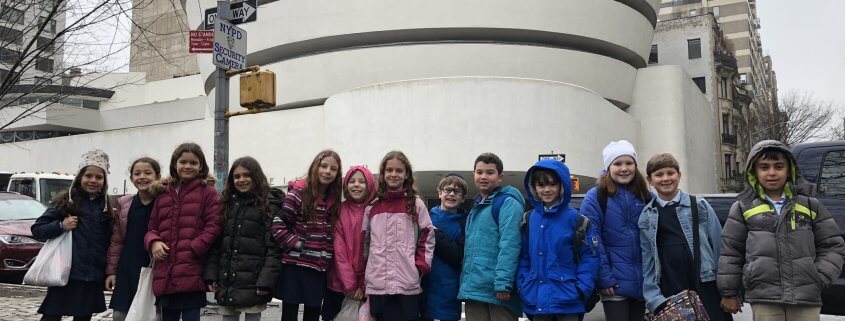A Cultural Shift
By Shira Jacobson, Curriculum and Programming Coordinator
At the end of each year, we carefully assess our units of study. Were the students engaged in the content of the lessons? Were students able to interact thoughtfully and critically with the material? Were there sufficient resources available to the teachers and students? At times, this process results in some refreshing or minor restructuring of units. However, there are also times when we find we need to completely rethink the content and lens of our teaching.
Several years ago, we reflected on our curriculum to identify grades and units that included, or could usefully include, teaching and learning related to race and diversity. While there were several places in our curriculum that we could add to and refresh, the third grade theme curriculum about Culture really stood out as a place for us to revise and rethink the content we were teaching as well as how we were helping our students understand culture.
We began the process by asking ourselves some important “big concept” questions. How can we help students understand and appreciate similarities and differences in culture? What are the ways in which culture and identity intersect? How does race impact cultural identity? How can we authentically teach about cultures that are not present in our own community? Finally, how can we use our own backyard, New York City, as a resource for teaching and learning?
With these questions in mind, we began to design our year of study. The obvious jumping off point were the student’s own experiences, through which we could not only explore culture in their own families, but also the rich diversity of Jewish culture. The students would develop an understanding of “Culture” through their own heritage and then compare their family stories with those of their classmates. As they begin to develop their own understanding of culture, they will see the complexities and diversity that exists within and appreciate and celebrate them. The students would continue to learn Jewish customs and rituals of different Jewish cultures as part of the Jewish holiday curriculum throughout the year.
We then looked at cultures in New York City that we could explore in an authentic and meaningful way. In collaboration with the teachers, we began searching for literature, non-fiction texts, and available field trips, to help us shape our unit. This led us to focus on three New York City cultures, Chinese-American culture in Chinatown, Latino culture in El Barrio, and African-American culture in Harlem. In addition, this study would allow for an interdisciplinary research project that would showcase the student’s learning.
The year would end with a unit on different cultures in Israel. The students would use the concepts learned throughout the year to delve into a study of three or four cultures in the country and how the cultures are expressed.
We are in our second year of this new Cultures curriculum. This year, the third graders engaged in thoughtful and nuanced discussions about their identities and how they express culture. They read books and stories about children all over the world and how their cultures influence their day to day lives. Students interviewed people of different backgrounds and asked them insightful and curious questions about their cultures and identities. The class took several field trips including an apothecary in Chinatown, a walking tour of El Barrio, a musical celebrating the life and music of Tiito Puente, a show at the Apollo Theater, and a visit to a sephardic synagogue.
In mid-March, while the students were still engaged in their learning and about to begin working on their final projects, we moved to distance learning. Given the change in environment and the challenge of resources, we needed to think creatively of how the students could prepare and share their learning in a meaningful way. We realized that all our students had a rich and personal resource with them in order to complete this final project, their families! Students were asked to think about the cultures they learned about and ways in which people express culture. They then turned to their families to discuss what cultures they are a part of and how they express these cultures. Finally, they took all this information and the learning from the entire unit and prepared a presentation. Students were asked to make a seder plate with 6 items on it. Three items would represent aspects of their culture and three items would represent their personal and unique story. Just like they learned that the seder plate has items that help us remember and understand the story of the Jews leaving Egypt, this seder plate would tell their story.
Days before Pesach, the students gathered virtually, to present their projects with their classmates and families at Free to Be Me, a Pesach Inspired Culture Fair. Click here to view a video of the virtual culture fair. We are very proud of what our students produced, and all that they learned about the concept of culture.



